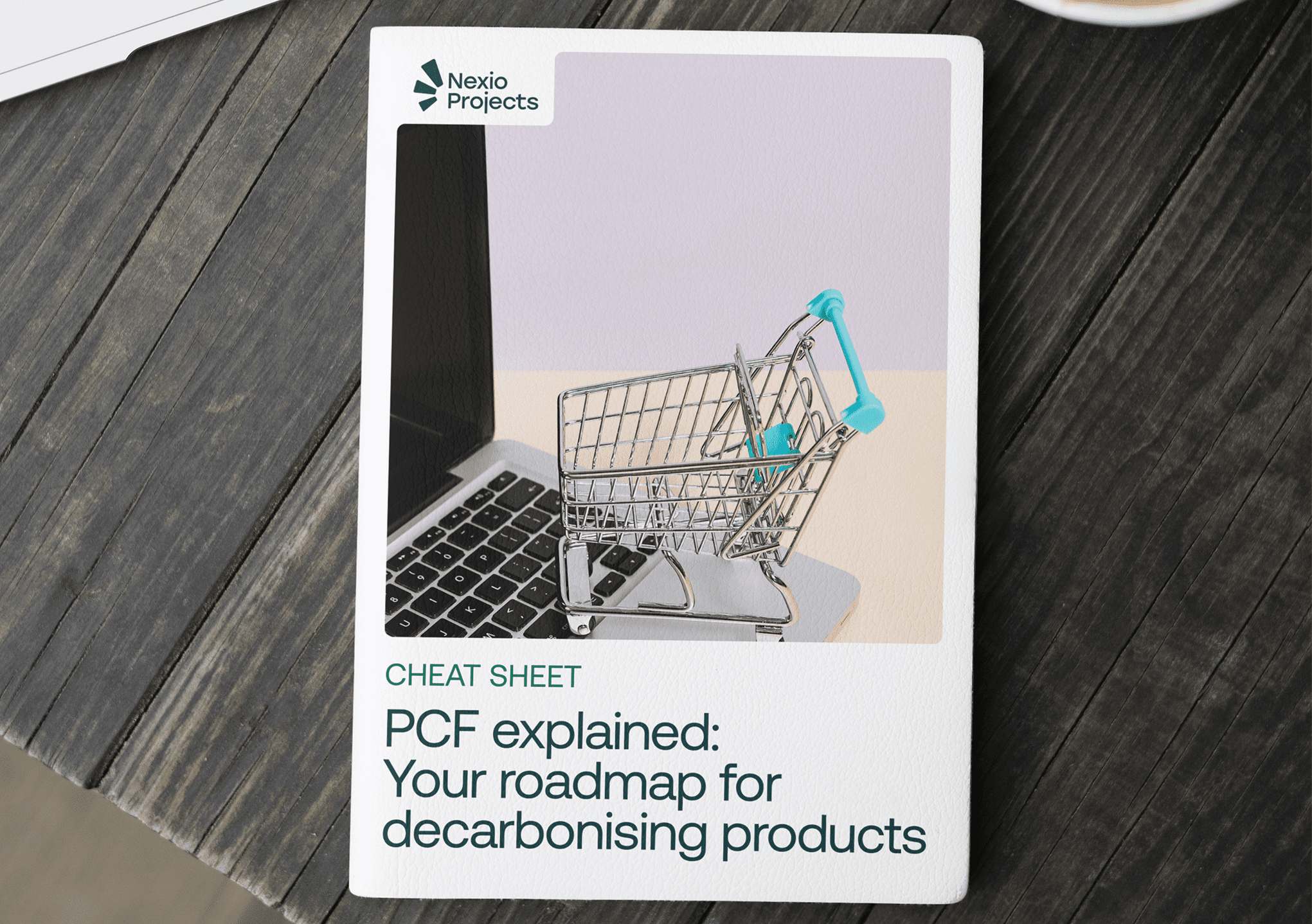PCF explained: Your roadmap for decarbonising products

Download now
Nexio Projects needs the contact information you provide to us to contact you about our products and services. You may unsubscribe from these communications at any time. For information on how to unsubscribe, as well as our privacy practices and commitment to protecting your privacy, please review our Privacy Policy.
Factsheet content
Product Carbon Footprints (PCFs) are becoming a critical tool for organisations working to decarbonise products, comply with new regulations, and build transparent, resilient supply chains. Built on recognised Life Cycle Assessment (LCA) standards (ISO 14040/44 and ISO 14067), a product carbon footprint quantifies greenhouse gas emissions across a product’s life and helps businesses meet growing expectations from regulators, customers, and partners. These methods also support the application of Circular Economy Principles by identifying opportunities to reduce waste, optimise materials, and design lower-impact product systems.
This factsheet offers a practical overview of PCFs and a clear roadmap for integrating them into product and supply-chain strategies. It explains the fundamentals, outlines simplified calculation steps, highlights best practices for scaling PCF efforts, and clarifies how PCFs differ from Product Environmental Footprints (PEFs). Insights from industry leaders—such as Unilever’s work with the PACT Supplier Climate Programme—illustrate how structured data, collaboration, and supplier engagement drive meaningful emissions reductions.
Designed for sustainability, procurement, and product teams, the factsheet provides concise guidance to help organisations build credible PCFs, prioritise decarbonisation actions, and communicate product-level climate performance with confidence.
What you’ll find inside
Chapter 1: Product Carbon Footprints explained
• What a PCF is and how it works through LCA methodologies
• Why PCFs matter for business strategy and circular design
• Lifecycle perspective (cradle-to-gate / cradle-to-grave)
• Types of data used in Life Cycle Assessment
Chapter 2: Step-by-step instructions
• Define goals, scope, and boundaries
• Map product processes and collect key data
• Apply calculation standards and emission factors
• Report transparently and improve through verification
Chapter 3: Advanced best practices for PCF
• Strategic supplier engagement
• Data quality and effective technology use
• Integration with design, procurement, and operations
• Collaboration and capability building
• Transparent reporting and verification
Chapter 4: Case study — Unilever & PACT
• Practical lessons from large-scale supplier collaboration
• How shared methods accelerate decarbonisation
Chapter 5: PCF vs. PEF
• Key methodological differences
• When each approach is most appropriate
Chapter 6: Frequently asked questions
• Common challenges, misconceptions, and starting points
